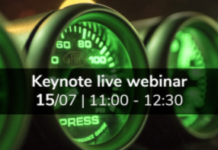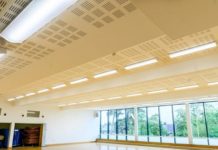By Saima Shafi
In a recent survey of energy managers, more than 83% of those surveyed reported that they had implemented LED lighting technology to reduce energy costs. When asked about what they would be investing in over the next year, 80% opted for LED lighting again. These days, overworked energy managers are expected to be wizards at all types of energy saving technologies, and sometimes it’s just too hard to keep up. I thought it would be helpful to outline some tips on LED lighting to make sure your project is successful.
Compare apples with apples – make sure you are comparing lighting options using meaningful parameters. For example, the easiest way to compare the efficiency of light is to look at the “Lumens per Watt” ratio. By using this, you can assess the brightness of one lamp against another and how much energy is used.
While lumens are important, make sure you carry out “lux level” testing to see what the current scheme is delivering. You’ll then have some values against which to measure the new LED lighting. CIBSE guidelines for buildings is a good source to know what levels are recommended for different types of buildings.
Energy meters are very helpful to demonstrate the effectiveness of your lighting project with clear “before” and “after” consumption readings. Don’t base your decisions on price alone. LED, like any other technology, offers many different solutions and is varied in performance.
Quality of lighting should never be overlooked. Deciding on price alone can result in the installation of inferior products and the cost of rectifying poor performance or an ineffective installation is high.
Involve stakeholders, staff and management. The best way to get everyone behind your project is to encourage their feedback. Agree a trial with trusted suppliers, and try before you buy.
Guarantees – while a lengthy guarantee may sound good, it may not be worth the paper it is written on. Does it cover replacement parts and/or labour? Are you restricted to annual hourly usage and, if so, which party has the burden to prove the usage? Be clear on exactly what is covered and what isn’t.
Don’t be bamboozled by lighting jargon. If the terminology sounds too complicated then it probably is. Ask your supplier to explain their lighting recommendations in simple terms. This will enable you to report back to all interested parties in the same way.
In next month’s issue we look at “quality” in more detail and consider the subject of lighting controls. If you have any lighting-related questions for Saima to explore, please email tim@energystmedia.com Saima Shafi is co-founder of Camberley-based LED Eco Lights



